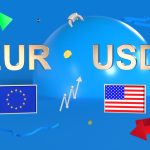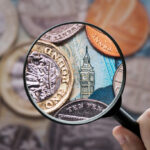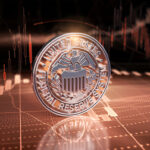Japanese Yen Strengthens Amid Trade Tensions and BoJ Rate Hike Bets.
The Japanese Yen (JPY) is gaining strength as global trade tensions rise, especially after US President Donald Trump’s announcement of new tariffs on imported cars and auto parts. The market is also reacting to expectations that the Bank of Japan (BoJ) will continue raising interest rates. Meanwhile, the US Dollar (USD) is under pressure due to concerns about the Federal Reserve’s (Fed) rate-cut plans.
Trade War Fuels Demand for Safe-Haven Yen.
On Wednesday, US President Donald Trump announced a 25% tariff on all imported cars and foreign-made auto parts starting next week. This move escalates trade tensions between the US and its trading partners. Additionally, Trump plans to impose reciprocal tariffs on at least 15 countries, increasing concerns about a global trade war.
As uncertainty rises, investors are moving their money into safe-haven assets like the Japanese Yen. The JPY is often seen as a secure investment during times of economic and geopolitical instability, making it more attractive in the current market environment.
BoJ’s Hawkish Outlook Supports the Japanese Yen.
The Bank of Japan is signaling a shift toward a more hawkish monetary policy, meaning it may continue raising interest rates. This expectation is backed by strong wage growth in Japan for the third consecutive year.
BoJ’s new board member, Junko Koeda, stated that inflation is moving toward the 2% target sustainably. This reinforces the belief that the BoJ will stay on its rate-hiking path, further boosting the Yen.
US-Japan Interest Rate Gap Expected to Narrow.
The Fed and the BoJ are currently moving in opposite directions. While the BoJ is considering further rate hikes, the Fed is expected to cut rates twice in 2025. If this happens, the interest rate gap between the US and Japan will shrink, making the Yen even stronger against the US Dollar.
Fed Officials Offer Mixed Signals on Interest Rates.
Several Federal Reserve officials have shared conflicting views on the future of US monetary policy:
Chicago Fed President Austan Goolsbee suggested that the next rate cut may take longer than expected due to economic uncertainty. However, he believes borrowing costs will be significantly lower in 12-18 months.
Minneapolis Fed President Neel Kashkari emphasized that the Fed has made progress in reducing inflation, but more work is needed.
St. Louis Fed President Alberto Musalem warned that inflation risks are rising, and if second-round tariff effects take hold, the Fed may have to keep rates higher for longer.
These mixed messages are causing uncertainty about the Fed’s next move, limiting the US Dollar’s ability to strengthen.
Durable Goods Data Offers Some USD Support.
The US Commerce Department reported that Durable Goods Orders rose by 0.9% in February, following a 3.3% increase in January. Core durable goods (excluding transportation) also rose 0.7%, exceeding market expectations.
This strong data gave the US Dollar a slight boost, but it wasn’t enough to offset the negative impact of the Fed’s unclear policy direction.
Market Focus Shifts to Key Economic Data Releases.
Tokyo CPI (Consumer Price Index): This report will provide insights into Japan’s inflation trends and may influence BoJ policy decisions.
US PCE Price Index: The Fed’s preferred measure of inflation. A lower-than-expected reading could increase expectations of Fed rate cuts, putting more pressure on the US Dollar.
These reports will play a crucial role in determining the near-term direction of the USDJPY currency pair.
Other US Economic Data to Watch
The US will also release:
Final Q4 GDP report
Weekly Jobless Claims data
Pending Home Sales report
While these data points are important, the PCE Price Index will be the most closely watched, as it could impact Fed policy decisions and affect the USD/JPY exchange rate.
Conclusion: Japanese Yen Poised for Further Gains.
The Japanese Yen is gaining strength due to rising trade tensions, BoJ’s hawkish stance, and Fed policy uncertainty. As investors seek safe-haven assets, the Yen is expected to remain in demand.
If the BoJ continues raising rates while the Fed moves toward rate cuts, the USD/JPY pair could decline further, pushing the Yen higher. However, upcoming economic data will play a key role in shaping the next move for both currencies.
For now, traders are keeping a close eye on the Tokyo CPI and US PCE Price Index, as these reports could provide new clues about the future of Japanese and US monetary policies.
https://voiceoftraders.com/analysis/eurusd-holds-steady-as-us-dollar-strengthens









